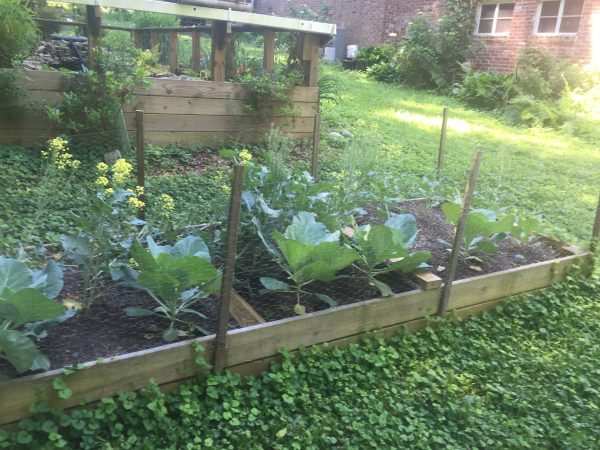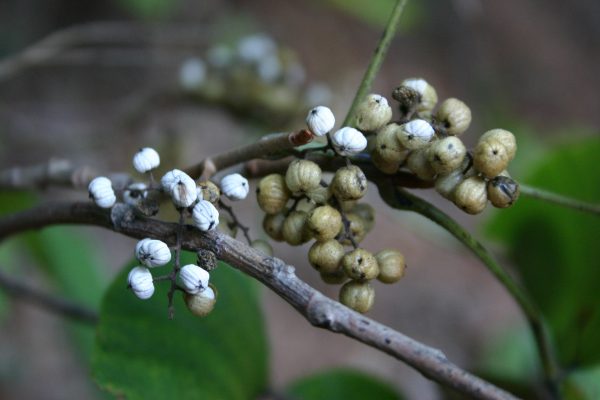Swiss Chard

Beta vulgaris var. cicla
Chard, more commonly called Swiss chard, is actually a beet that has been bred for leaves at the expense of the bulbous roots. Grown as a summer green, it is prepared like spinach.
• More detailed information can be found in The Georgia Fruit & Vegetable Book by Walter Reeves and Felder Rushing
• See also:
The attractive colorful stalks of red and yellow also can be prepared and used like asparagus, eaten raw or cooked, adding interest to summer dishes. Chard is becoming more common in grocery stores and can be bought at community and farm markets. But growing it yourself is the best way to obtain it. Swiss chard isn’t readily available in the stores, and when it is available, the quality is not as good as your homegrown vegetables. And you may grow more varieties, including the multi-colored ‘Rainbow’ and ‘Bright Lights’ kinds.
WHEN TO PLANT
Start seeds indoors under lights about 6 weeks before the frost-free date (average date of last frost). Sow seeds directly in the garden or set out transplants at the frost-free date. A spring planting will produce all summer if it is kept picked – even in the South.
WHERE TO PLANT
Chard does best in a location with full sun (8 to 10 hours will suffice). Good drainage and well-prepared soil will assure a quick start and bountiful production. (See “Soil Preparation” in the introduction to the vegetable garden.)
HOW TO PLANT
Apply a complete garden fertilizer, such as 10-10-10, at a rate of 1 1/2 pounds per 100 square feet of garden. Work the soil into a fine seedbed (make sure that the soil is finely broken up) to promote seed germination. In rows, sow chard seeds 1 inch apart, allowing 12 to 15 inches between rows. In a raised bed, sow the rows 8 to 10 inches apart across a standard 3- to 4-foot bed. In rows or beds, cover the seeds with 1/2 inch of fine soil. For summer seedings, place a board over each row to keep the soil from drying or from being compacted by pounding rain. Check twice a day to see whether the seedlings have begun to emerge, and remove the board as soon as you notice any seedlings. Swiss chard seeds are actually dried-up fruits containing 2 or more seeds, so don’t plant them too close together. As soon as the seedlings are large enough to handle, thin them to 4 to 6 inches apart. (You can recognize chard seedlings because they will be in rows and all look the same; weed seedlings will be randomly spaced, and all will be different.) After you have thinned them several times to obtain the correct spacing, the final spacing should be 8 to 10 inches apart. If you wait until the seedlings are about 6 inches tall, you can cook the thinned seedlings as greens. In beds, set seedlings 8 to 10 inches apart; and in rows, about 10 inches apart, with 18 inches between rows.
CARE AND MAINTENANCE
Chard needs 1 inch of water per week to develop tender leaves. These plants are very susceptible to leaf miner damage. The insects lay eggs just under the surface of the leaves. Then the larvae hatch and mine their way in the leaves, making dead brown trails. Covering the planting with cheesecloth or commercial row covers is the only way to protect the plants. Beet leaf spot disease affects chard as well. Apply a copper fungicide such as “Bordeaux” to prevent this disease, being sure to read and follow the label directions before you use it. Try to keep the foliage dry, and do not go in the garden when leaves are wet in order to avoid spreading diseases.
ADDITIONAL INFORMATION
Harvest leaves when they are young and tender, about 12 inches long. Cut individual leaves 1 inch above the ground, being careful not to injure the remaining leaves. Or cut the entire bunch just below the ground.
VARIETIES
Variety Name
Days to Maturity
Comments
Bright Lights
40
Stems red, white, orange, pink, violet and yellow mixed. AAS
Burgundy
40
Dark-green leaves with burgundy stems
Rhubarb
40
Red stems, deep green leaves with red veins
Ruby
45
Ruby-red stems, reddish-green leaves, red veins
Fordhook
42
Dark-green, savoyed leaves, light green stalks
Lucullus
40
Dark-green leaves, white stalks
Winter King
40
Dig in fall, keep cool and moist for winter harvest indoors
















